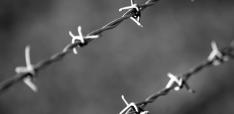Iran under Pezeshkian: Challenges for replicating reformist-era growth

Following Pezeshkian's victory, CMEG economist Mahdi Ghodsi explores replicating reformist-era economic growth, the challenges of international sanctions and domestic structures, and the institutional reforms needed for sustainable development and public welfare.
Pezeshkian might be able to overhaul Iran’s economy if conditions were like the reformist Khatami era
This Sunday (28 July 2024), the Islamic Republic’s highest authority, Supreme Leader Ali Khamenei, endorsed Masoud Pezeshkian as President. With President Pezeshkian, the economy might take a different path that has not been at play since 2005. As shown here in Figure 1, the reformist era during the presidency of Mohammad Khatami (1997–2005) saw a historic high for the Islamic Republic in average annual GDP growth and its main components, which came on the heels of the so-called reconstruction era during his predecessor, President Ali-Akbar Hashemi-Rafsanjani (1989–1997).
Growth during the Khatami era was driven by significant increases in investment, household consumption, and government expenditures, allowing the economy to employ an additional 5.7 million between 1997 and 2005. During this period, employment growth outpaced population growth, resulting in 29.7% of the population being employed in 2005, compared to 24.2% in 1997. Furthermore, the average annual inflation of the consumer price index (CPI) during the two-term Khatami presidency stood at only 15%. It was an era of growth and minimal double-digit inflation.
To replicate the economic improvements of the 1997 to 2005 period and further Iran's economy and people's welfare, implementing similar policies under a similar environment could be considered. However, today’s Islamic Republic is much more autocratic, and the monopoly of power in the hands of its Supreme Leader Ali Khamenei and his selected bodies has made the country’s political and economic institutions much more extractive than in the Khatami era. Iran is now targeted by much more severe U.S. extra-territorial sanctions, with its economy being more isolated than back then. Therefore, only if substantial institutional reforms are undertaken, average growth rates of around 4%, as experienced during Khatami’s reformist era, driven by industrial growth rather than oil exports, could be expected.
For instance, in 2002, net inflows of FDI relative to GDP and its growth skyrocketed, reaching a historic post-1970 high (see Figure 41 of this report), following the legislation of the Foreign Investment Promotion and Protection Act (FIPPA) by Iran’s Parliament that year. Currently, with the most restrictive forms of U.S. secondary sanctions and the increasing desire in Europe to list Iran’s Islamic Revolutionary Guard Corps (IRGC) as a terrorist organization, the situation is more tense than during the Khatami era.
In his 2002 State of the Union address, U.S. President George W. Bush included Iran in the “axis of evil”. At that time, Washington was just beginning to introduce sanctions and garner consensus in the international community. Today, therefore, Pezeshkian would need to reduce the level of targeted sanctions to at least those of the early 2000s to allow for similar growth rates as seen during the Khatami era. Since Pezeshkian seems to have been a planned choice by Khamenei, it seems that the Supreme Leader himself has decided to pursue the path as suggested by Pezeshkian during his presidential campaign, i.e. to alleviate the country’s economic crisis by removing U.S. sanctions. To this end, the most important policy is to return to negotiations, or as Khatami had framed it back then, a “Dialogue Among Civilizations”.
Providing an environment to create jobs should be the priority
As noted in this article, Iran’s most critical problem over the past decade or so has been negative growth of net investment. Shrinking stock of capital and rusty infrastructure have not allowed the economy to employ as many people as the population demography was demanding. Only 29% of Iranians are officially working now, which imposes an enormous burden to feed the other 71% of society. Investment needs to be substantially increased in the years to come so as to provide the required capital to employ the population who remained unemployed in their most productive years (i.e. between the age of 18 and 35). To increase investment, the uncertainties due the Islamic Republic’s domestic and international politics, as well as societal discontent would need to be de-escalated as soon as possible. In fact, to reduce uncertainties, policies ought to converge with society’s expectations from the state. This would mean, inter alia, issues of discontent including the brutal enforcement of the hijab upon Iranian women ought to stop. Only reforms at this scale and scope could help return society to its productive and cooperative form. Otherwise, if Pezeshkian cannot meet society’s expectations (e.g. freedom of dress code but also that of the media, press, social relations), his support base would fall behind his electoral base, leading to a further loss of legitimacy of the political system as a whole. That, in turn, would increase the uncertainties and the political risk of another societal uprising, which would exacerbate the environment for doing business and investment growth.
Pezeshkian can improve Iran's economy only with institutional reforms and removal of sanctions
Important obstacles to economic growth in Iran are international sanctions and its blacklisting by the Financial Action Task Force (FATF), which also increase the costs of exports. Such additional transaction and trade costs have reduced the competitiveness of Iranian sectors in international markets. If the Islamic Republic does not pursue a change in foreign policy, the poor economic conditions will persist – and the higher average annual growth experienced during the 1997–2005 reformist era will not materialize. Since the presidential candidates are selected within a set of policy choices determined by Khamenei, Pezeshkian, as president, is unlikely to have a difficult path persuading the Supreme Leader towards sanction removal. However, Khamenei has always distanced himself from the policies implemented by presidents to avoid taking responsibility in case of failures. Furthermore, the new President may face significant resistance from other hardline factions in the political system (the IRGC, the Parliament, the Expediency Council, the Guardian Council, and the Judiciary), who may be inclined to continue to sabotage any efforts to foster relations with the West to remove sanctions on the crippled economy. Such sabotage during the Hassan Rouhani presidency (2013–2021) led to the collapse of the implemented JCPOA and Khamenei emerged victorious, seeing his argument vindicated not to trust Washington.
After the announcement of the election results, the financial market in Iran reacted slightly positively, anticipating better economic conditions as a result of a potential opening of the economy and reduction of international tensions. The rial, the national currency, appreciated in the unofficial market from 618,000 rials per U.S. dollar (USD) on 30 June 2024, i.e. prior to the second-round election, to 596,000 rials per USD on 6 July 2024, i.e. after results were announced. The Tehran Stock Exchange also responded positively, showing gains.
This suggests that Pezeshkian would need to quickly implement his election campaign promises to remove sanctions, commit Iran to comply with FATF standards and regulations, create a better investment environment, improve social policies such as removing the so-called morality police tasked with overseeing the implementation of mandatory hijab rules, and lifting internet filtering. If he fails to achieve progress on any of these fronts swiftly, market expectations will diverge from ongoing realities, leading to increased uncertainty and the continuation of protest movements. Should this happen, Iran may face a severe negative shock, resulting in the further depreciation of the rial, rising import prices, higher inflation, more stringent international sanctions, reduced oil revenues, continued difficulty in implementing expansive fiscal policy, shrinking investment, and rising unemployment, which would also be highly detrimental to the Islamic Republic’s economic stability and political survival. However, if comprehensive reforms are not prioritized, particularly by eliminating the monopoly of power held by the Supreme Leader and his selected Guardian Council, and other hardline factions of the system, there is no hope for fostering a prosperous economy. Iran’s real GDP per capita is still lower than its peak in 1976, demonstrating a failing political system lacking institutional capacities for sustainable development. Therefore, without institutional reform, the Iranian economy will likely continue to suffer even more in the medium to long run.
An important aspect is that the distribution of rent and resources will shift towards reformists and those closer to Pezeshkian. Since the public sector accounts for approximately 70% to 80% of Iran's total GDP, the president plays a crucial role in diversifying the country's resources according to his chosen direction. For three consecutive years, former President Ebrahim Raisi (2021–2024) redistributed the national budget from the people to the Islamic Republic’s “trinity” of security-military, propagandistic, and commercial-clerical apparatuses, by increasing taxation on the private sector. Whether Pezeshkian's policies will change the structure of the budget in favor of the nation rather than the political system and lead to an increase in public and private investment, thereby creating jobs and eradicating poverty, or else continue the inflationary policies of direct cash handouts initiated during the hardline populist Mahmoud Ahmadinejad era (2005–2013), remains to be seen.
Meanwhile, a society striving to regain its lost power against the brutal political system of the Islamic Republic is carefully observing the next policy choices of Iran’s new president Pezeshkian. However, as Supreme Leader Khamenei’s grip on power is much tighter than before, and as experienced during previous presidencies, there remains little hope for society to see meaningful improvements in their lives.
Dr. Mahdi Ghodsi is a Senior Fellow and Head of the Economy Unit at the Center for Middle East and Global Order (CMEG). He is an Austrian–Iranian economist with the Vienna Institute for International Economic Studies (wiiw) and an external lecturer at the Vienna University of Economics and Business (WU).
Photo by Kamran Gholami


